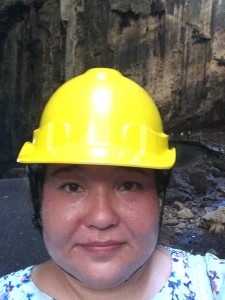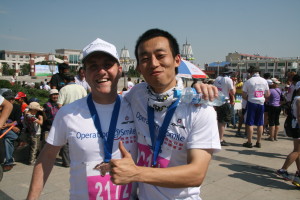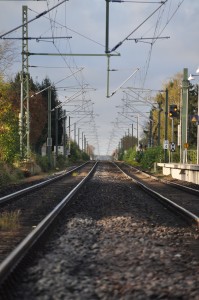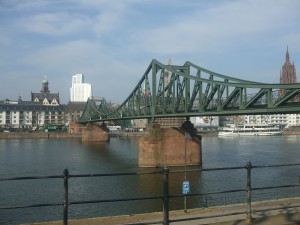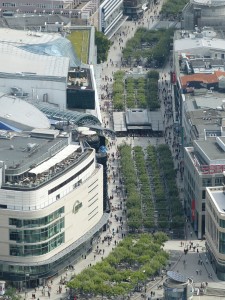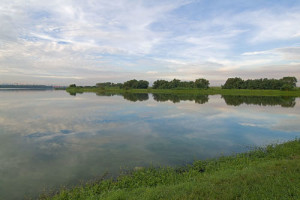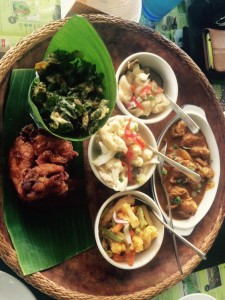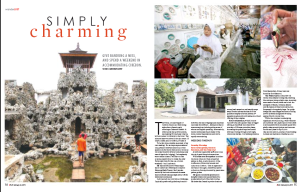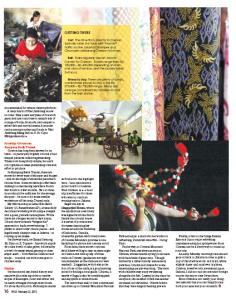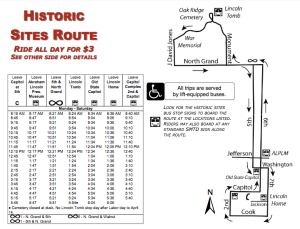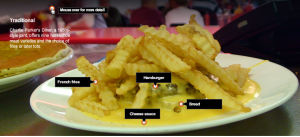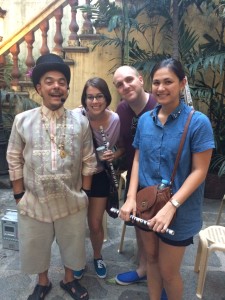The theft of my iPhone in Senggigi (in all honesty, due ENTIRELY to my own negligence), my very own amusing CSI Lombok experience with the local police and “Find my iPhone” maps that were virtually useless on a largely uncharted island, and the ultimate combination of threats and bribes that finally got the phone back into my own hands, made me realize how much we take for granted, and how easily a weekend voyage can be ruined without adequate advance planning. But hopefully these tips, and accounts of my own travel snafus, will be of some use!
Even the most seasoned, well-prepared traveler can find him or herself in an unexpected jam. Sometimes this is entirely of one’s own making (a moment of spaciness, forgetfulness, or general fatigue). Other times it is simply an instance of Murphy’s Law, or the universe conspiring to make life inconvenient at the most inopportune moments. Being prepared for the worst case scenario, however, can make these travel hiccups bearable. So, in order of likelihood:
1) Weather
Inclement weather and inappropriate attire can place a spanner in the works of any trip. Too many times I’ve seen people who traveled for hours turned away from holy shrines due to inappropriate attire, shivering on so-called tropical mountains, or otherwise paying an extortionate amount for appropriate gear on site. And yes, on occasion I’ve even been one of said travelers. My weirdest experience was getting caught in a freak rainstorm in Eastern Europe and having to explain to bemused immigration officials how my Hungarian visa stamp had literally washed out of my passport which had been rather foolishly stowed in the back pocket of my jeans. (I was 19 at the time, so perhaps can be forgiven for the lapse in judgment.) A more plebeian instance was freezing my butt off on Capetown’s Table Mountain after sunset and having to buy a US$ 100 fleece!
Nowadays I always travel with the following: a light umbrella in my purse, layering pieces of clothing, and a scarf/sarong that in a pinch can serve as a picnic blanket, beach towel / outdoor changing station, or head/leg covering for visiting holy sites. I also always throw in a pair of thin flip flops, one pair of sports shoes, and one pair of comfortable but presentable shoes that can go from day to night should an unexpected evening out / business meeting come into play. While packing too many pairs of shoes is the most common a rookie mistake, bringing only one is equally risky as you are really stuck if your shoes get wet (or, as could only happen to me, if you fall into an irrigated and fertilized rice paddy and, well, smell a bit ripe.) Ziploc bags weigh nothing and in a pinch are great for protecting passports, wallets, and mobile phones/cameras, not to mention saving a lot of headache from leaked shampoos, gels or worst of all — oils. (Remember that changing pressure in the baggage cabin can cause even the most sturdy travel bottles to expand/contract and therefore leak.) For more intense, rugged travel, investing in a dry bag and/or specialized housing for your phone/camera is a worthwhile expenditure.
2) Lost/Delayed Luggage
2.1: BEFORE it is lost.
For most of us, bags missing a flight are simply an inconvenience. However, before your trip there are a few steps that you can take to minimize risk and/or survive the experience.
Handcarrying the basics: I always bring at least one extra pair of underwear, an extra shirt, prescription medication, and any other vital items in my carry-on luggage to ensure that I am not stranded unawares. (You can choose to pack your toothbrush/toiletries, but keep in mind that these are typically easy/cheap to replace.) I once had to go to a 9 am business meeting in a denim skort and tshirt because my luggage had missed my flight — which happened to be the last one of the previous evening. Luckily the meeting was with an NGO and my predicament served as an amusing ice breaker. But it was a dumb move on my part.
Minimizing distractions and the number of items you need to take out/off in the security lane. I was once so flustered in the Mumbai airport that I left my laptop in the security lane while running to catch a flight. But happily I had taped my business card to the bottom of the computer, and when I called the airport upon landing, they had it safely stowed for retrieval by my very kind Indian colleague. Taking a critical conference call while going through security at Washington National Airport, I left my watch in the bin. It wasn’t particularly valuable, but I never got it back. Normally I would have placed it in my bag and grabbed it off the conveyor belt, but being distracted and stressed, I strayed from my routine and paid the price for it.
Properly tagging / marking your bags: Those with extra cash to burn / higher stakes to lose may wish to consider investing in newer RFID-tagged luggage that ensures that YOU can find your bags even when the airline can’t. You can also invest in RFID luggage tags for a little less, but don’t make the rookie mistake of placing them on your baggage handle where they can easily break/ fall off. Place them inside your suitcase. And remember that even the best technology is useless if you don’t register it in advance. But even the travel Luddite can maximize the chances for recovery by taking a few small but effective steps.
- Include a copy of your itinerary (dates and hotel names) INSIDE your luggage. The best place is the unlocked front pocket of your nylon luggage. This both helps with identification and ensures that your tropical vacation gear does not get sent back to your home in sub-arctic Michigan mid-vacation.
- Write your email address and phone number on your luggage tag.
- Do NOT put your home address on your luggage tag. This is an open invitation to rogue baggage handlers / thieves who have definitive proof that you are not home. Use an office address if possible or, as stated, above simply put your electronic contact details.
- Differentiate your bag. Reporting a lost, unmarked black ballistic nylon bag is about as helpful as describing an Asian as having dark hair. Popular tricks include putting colored tape on the bottom of the bag, any variety of luggage belts, yarn/ribbon, and other “crafty” solutions. Tacky, but effective!
- Do NOT put fragile stickers on your bag. This essentially broadcasts that there is something valuable to steal (even if there isn’t.) Proper packing can insulate almost any breakable item — and if it’s really that valuable/fragile, you should probably be hand carrying it anyway.
Checking airline baggage tags in advance: Yes, mistakes ARE made on occasion. Ensuring that your bags are going to the right destination is an obvious but frequently overlooked first step. Fully understanding procedures surrounding international transit (Do you have to clear customs with your luggage and drop it off at a separate belt? Or does it automatically transfer through?) is next. Furthermore, if you are traveling an “unusual” route, don’t assume that the airline staff at your departure airport are fully familiar with the policies and procedures at your destination. Ask again on the ground.
2.2: AFTER it is lost.
- Report it EARLY. Don’t wait for the luggage belt to stop — by then there will be scores of people in line at the lost baggage desk. If you’ve seen the same bags go around the loop twice or more, chances are that’s it.
- Note as MANY details as possible on the form. Bag type, dimensions, any other identifying marks make it easier to find your luggage if the airline’s tags have accidentally fallen off. Have your baggage claim stubs handy.
- Politely request that the staff member try to track WHERE your bag is. Knowing that it is safely sitting in a specific airport waiting for shipment on the next flight out is VERY comforting. If it cannot be found, ask about your options (including a stipend for replacing essential items, and potential liability for an irrevocably lost bag.)
- Keep receipts for any items you purchase to replace essential items as they may be claimable.
- Ensure that you know how to track the progress of your bag once you leave the airport. Some airlines have an online system while others will provide you with a contact phone number or email address for updates.
- Make sure that you leave contact information for the delivery driver to reach you, and an appropriate protocol (do you require a signature? Can the bags be left on the front porch?)
- Inform your host / hotel that a bag is expected to be delivered and when it will arrive. This minimizes confusion upon arrival.
3) Electronic / Technology Disasters
Theft or travel destruction of electronics while traveling is a surprisingly common occurrence. I mentioned my own recent phone theft,
- Backup, backup, backup. I always back up my laptop onto an external hard drive before I leave for a trip. What I have neglected to do in the past (and will be far more religious in doing in the future) is to ensure that my phone (and phone photos) are regularly synced to my cloud account. Learn how to back up iPhone, BlackBerry, and Android devices. I am probably the only person on the planet without a tablet, but back that up too!
- Download your camera photos /videos regularly (either to a laptop or even better, onto a cloud account.) I’ve lost more irreplaceable digital photos than I care to admit over my years of travel. 🙁
- Know how your phone tracking software works. Apps like Find My iPhone, Find My Android Phone and BlackBerry Protect make it easier than ever to track your phone and even communicate with the thief / finder. Through a series of messages that the Find My iPhone app allowed me to post on my phone’s home screen, I was able to both threaten and cajole the thief by informing her that if I blocked the phone it would become a useless brick that she couldn’t resell, whereas by returning it to me she could get a reward. Happily this turned out to be an effective approach.
4) Theft / Loss of Valuables
The best solution is not to bring valuables at all. But of course this isn’t always feasible — so keep these tips in mind.
- The in-room hotel safe is NOT your friend. I have countless friends who have lost everything from money to engagement rings and family jewelry by depending on these electronic theft traps. If you happen to be traveling with a lot of cash, irreplaceable documents, or expensive jewelry, call your hotel manager to arrange for these to be stored in the hotel’s business safe. Other things, like your passport, ordinary electronics, and day-to-day jewelry are far safer being locked in your luggage than in the in-room safe.
- Separate your credit cards and cash. Keeping your money and cards in one place may seem like the organized thing to do, but can be catastrophic when someone walks off with your bag/wallet. Make sure that you have at least one emergency credit card and extra cash (preferably in an easily convertible currency like USD or Euros) tucked away in a safe location. Also, in addition to cloud-based backup (I personally use MSecure because of its multi-platform reach) make sure you have the phone numbers of your card companies noted down in a notebook or other safe place so that you can instantly call to cancel/replace your stolen cards.
- Consider whether a wallet is the way to go. Long ago on a trip to Rome, an Italian friend gave me some great advice that I still use to this day when traveling to places renowed for pickpockets. Put your money loose at the bottom of your bag and hold it tightly — that makes it almost impossible for a pickpocket to do a quick “slight of hand” move.
- Have photos of any valuables that you are bringing with you readily available to include with any police / insurance company report.
5) Fine Print / Contractual Issues
Visa Policy: Arriving in Vientiane on a late night flight last month, I found myself in line behind a German tourist who was incredulous that the visa counter did not accept credit cards. Luckily for her, I had extra USD cash on hand and managed to do a quick exchange. Five seconds on the immigration and customs website could have saved here this hassle. China has been known to incarcerate visa overstayers (though they are typically fined). So caveat emptor!
Flight Delays: Most people assume that if a flight delay prevents you from making a connection, that the airline is responsible for finding you an alternative flight at no cost. This is rarely the case if you have booked two separate itineraries independently. When you make travel plans, especially to places notorious for delays, weight the costs and benefits carefully.
Not Checking for Errors: More times than I can count, I’ve found my name misspelled or in the wrong order on airline and train tickets. With heightened security around the world, this simple error could mean that you will not be allowed to travel. Recently in New Zealand, a friend of mine got a notice from the airline that her original connecting flight had been cancelled and, as a result, they had booked her on an alternative flight. This would have been fine in theory, but it turned out that they flight they had rebooked her on departed EARLIER than her originating flight. There was no way humanly possible for her to make it. Given that she had important meetings the next day, this would have been a disaster for her.
6) Force Majeure
Even in my own short life I have lived through some actually scary (Philippine People Power Revolution, Tiananmen Square) and overhyped (Y2K, Indonesia’s remarkably calm 2014 election). I’ve also some close calls (airport bombing in Karachi, typhoons/hurricanes, Sichuan earthquake. It is generally a good practice to register your travel plans with your home embassy to ensure that they update you on evacuation plans should unexpected force majeure incidents impact your travel plans. Most of my friends think this is crazy paranoia, but having been evacuated twice out of two different countries, I feel that two clicks on a website are well worth the peace of mind.
7) Don’t Give Up!
Finally, even when faced with the most intractable policies, never give up. From asking to speak to someone more senior, to approaching a newspaper’s travel ombudsman, better business bureau, or regulatory agency, you may still be able to resolve your problem. And remember that you can catch more flies with honey than vinegar — losing your cool or being insulting/arrogant with staff will far more likely harm than help your case. (Pleading my case with a Jet Star check-in agent in Singapore and getting her sympathy saved me from baggage fees that would have exceeded my ticket price!)
In short, expect the best, prepare for the worst — and either way remember to enjoy your trip! Sometimes the worst travel disasters make the best stories. . .







